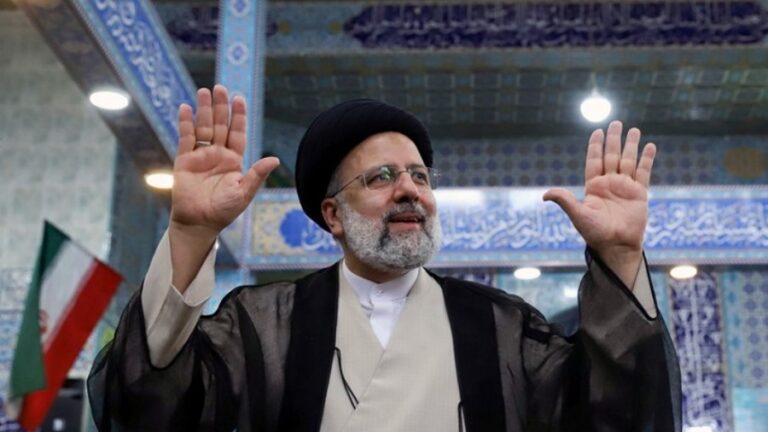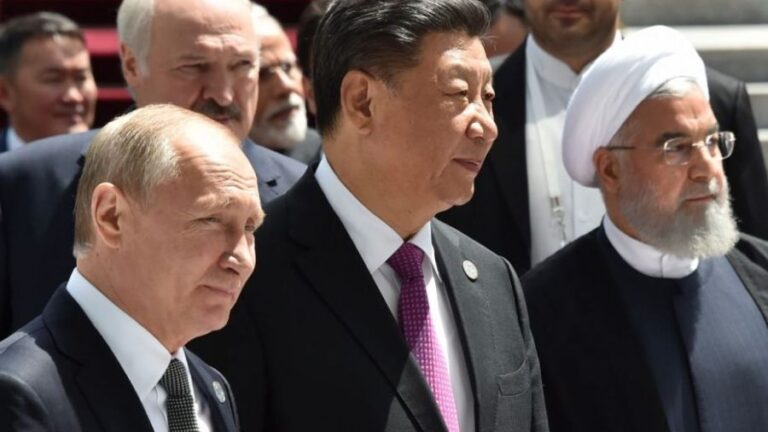What Future Awaits the Arab NATO?
The political instability that we’re observing in various parts of the world accompanied by the burning desire that certain international players share to obtain ever greater profits by selling all sorts of weapons to no matter who have been widely discussed by the majority of media sources around the world recently. At that point, the West seems determined to create as many military alliances as it can, since once such a alliance is created this step is usually followed by a major increase in arms sales.
Thus, the European Commission has recently gave way to the military lobby by starting the review of the European defense doctrine by 2025, the Sueddeutsche Zeitung reports. The document offers various courses of action for the EU in its military activities and one of them goes way too far. In particular, it not just proposes the EU to assume the right to create no-fly zones and conduct naval operations in the territorial waters of other states, but proposes to introduce retaliatory measures against cyber attacks along with the closer integration of the EU armies.
There’s no logical explanation for the desire of the European members of NATO to raise defense expenditures since there’s none. Nevertheless, judging by the events that have been taking place recently, budgets will increase, since such an approach, the approach based on lies and corruption, is being promoted, since it fits perfectly in Washington’s into anti-Russian rhetorics that we’ve been seeing recently. In short, Trump has already demanded that the global NATO expenditures must reach the amount of 57% of all defense spending in the world. According to the decision that was adopted at the NATO summit in Wales back in 2014, up to 20% of these funds should be allocated for the purchase and development of new types of weapons. For sure, it goes without saying that those weapons would be American.
At the same time Washington is determined to cut its spending by allocating the burden of an arms race that it has started on regional military alliances. The White House has been very active recently in its attempts to persuade its allies to create regional versions of NATO, where the leading role will still be occupied by the United States. A particular attention the US political elites have been paying recently to the Middle East and South-East Asia as the two regions where new NATOs can be created.
The attempts to create an armed alliance controlled by Washington, which would decide the destinies of the countries of the Middle East haven’t started just recently. These steps were preceded by the purposeful destruction of the Middle East with the US and its European “allies” not just undermining the very foundation of regional states by their defense capabilities as well, rendering the most competent armies of the region that could be found in Iraq, Egypt, and Libya ineffective. Among the remaining real military adversaries who could resist the United States and Israel in the region one can only name Syria and Iran, which are being purposefully discredited and destroyed today. What remains are the states of the Persian Gulf that were never famous for their prowess on the field of battle, therefore they cannot effectively oppose anyone without purchasing American weapons and hiring mercenaries from such countries as Pakistan.
As a result, Saudi Arabia surrendered to the US pressure, announcing as far back as 2015 its intentions to creation of an “Arab military alliance” that it was planning to fund along with other money bags from the Persian Gulf. In 2017, thanks to the visit of Donald Trump to Riyadh, this alliance became known as the “Arab NATO”. According to Washington’s plans, this alliance should keep it guns pointed at all the forces in the region that are displeased with the existing state of affairs, while at the same time retaining the premise of independence in order to ensure that no one can blame America in the events that are about to unravel in the region.
This so-called “alliance” has already passed through certain structural and strategic stages of its formation, while retaining the anti-Iranian position that has been advocated by Washington for a long time.
Initially, the anti-Iranian alliance began to emerge in the Arab world as early as back in March 2015, when ten countries (Saudi Arabia, UAE, Qatar, Kuwait, Morocco, Tunisia, Algeria, Sudan, Libya and Jordan) responded to Egypt’s to shape the idea of opposition to Tehran in more or less comprehensive form. Then, in December of the same year, Saudi Arabia declared that its main regional aspiration would be the fight against international terrorism. However, Riyadh’s first step on the road towards its stated goal was the creation of the Islamic Military Alliance to Fight Terrorism (IMAFT). However this alliance wasn’t baptized by fire in skirmishes against ISIS forces, instead Riyadh decided to unleash it armed forces against the state of Yemen, starting a war that continues to this very day.
Initially, the National Assembly of Pakistan has even appointed the Pakistani ex-general Raheel Sharif the commander of the IMAFT joint forces. It was believed that the coalition would serve as a platform for regional cooperation in the field of security, providing training to the military personnel of member states, along with equipment and weapons, while providing consult to the prominent religious figures about steps they can take to fight the spread of extremism. As the alliance formed, the anti-Iranian orientation of its Sunni majority, financed by the KSA, became apparent as the desire to strengthen the influence enjoyed by the Saudi monarchy in the Middle East. To make the matters worse the alliance failed to provide any effective solution to the problem of terrorism in the region. Instead, the Persian Gulf monarchies, while following Donald Trump”s lead, while enjoying the tacit consent of the Prime Minister of Pakistan, accused Iran of sponsoring terrorism.
The Wall Street Journal would note that the White House has been maintaining contacts with the IMAFT representatives precisely with the aim of explaining to them the functions, rights, duties and preferences of the future younger brother of the “big NATO”.
According to The Foreign Policy, the former NATO commander, admiral James G. Stavridis has revealed that initially the alliance will be formed out of the troops dispatched by Egypt, Jordan, Morocco, Saudi Arabia and Sudan. They will be headed by a Saudi general, while the governing structure will be located in Egypt. The Air Force at the initial stage will be composed out of 1000 servicemen, the Navy – about 5000, with the total amount of land forces reaching 35 thousand people. Each country will finance the maintenance of its own soldiers, and for the leadership team will allocate the necessary amounts of the Cooperation Council of the Arab States of the Persian Gulf (GCC).
The United States takes on the role of an organizer and will provide support the alliance, although formally it will not enter it. Additionally, the “Arab NATO” will exchange intelligence information with Israel. Saudi Arabia and some other countries of the region that have recently been purchasing US arms, will rent the alliance with armored vehicles and military equipment, so that all the states that are not rich enough to buy US weapons still could be “a part of the show”.
The deep seriousness of the intentions of the White House to create the “Arab NATO” is confirmed by a huge package of arms contracts that President Donald Trump signed in Riyadh. It’s been reported that the US is planning to deliver 110 billion dollars worth of arms to Saudi Arabia. In return, Riyadh promised to spend another 350 billion dollars over the next decade to purchase even more weapons. Thus, Trump removed all restrictions to the supply of weapons that had previously been hampered by the administration of Barack Obama – in particular for numerous civilian casualties in Yemen caused by the extensive use of the sophisticated American weapons.
However, these new shipments are definitely not destined for the Saudi war in Yemen. Those are going to wait a major military engagement in the Middle East. Washington and Riyadh are planning to bring down Bashar al-Assad and then attack Iran, and they are not making a secret out of it.
In view of all this, the most serious suspicions arise that the “Arab military alliance under the American roof” is being created not for the purpose of defending, but for unleashing new armed crises, using massive armies well-trained terrorists to destroy secular states to the north, including the post-Soviet ones.
However, it appears that the amount of internal feud among the states in the region is so widespread that they will not be able to form a real force.
By Jean Périer
Source: New Eastern Outlook







